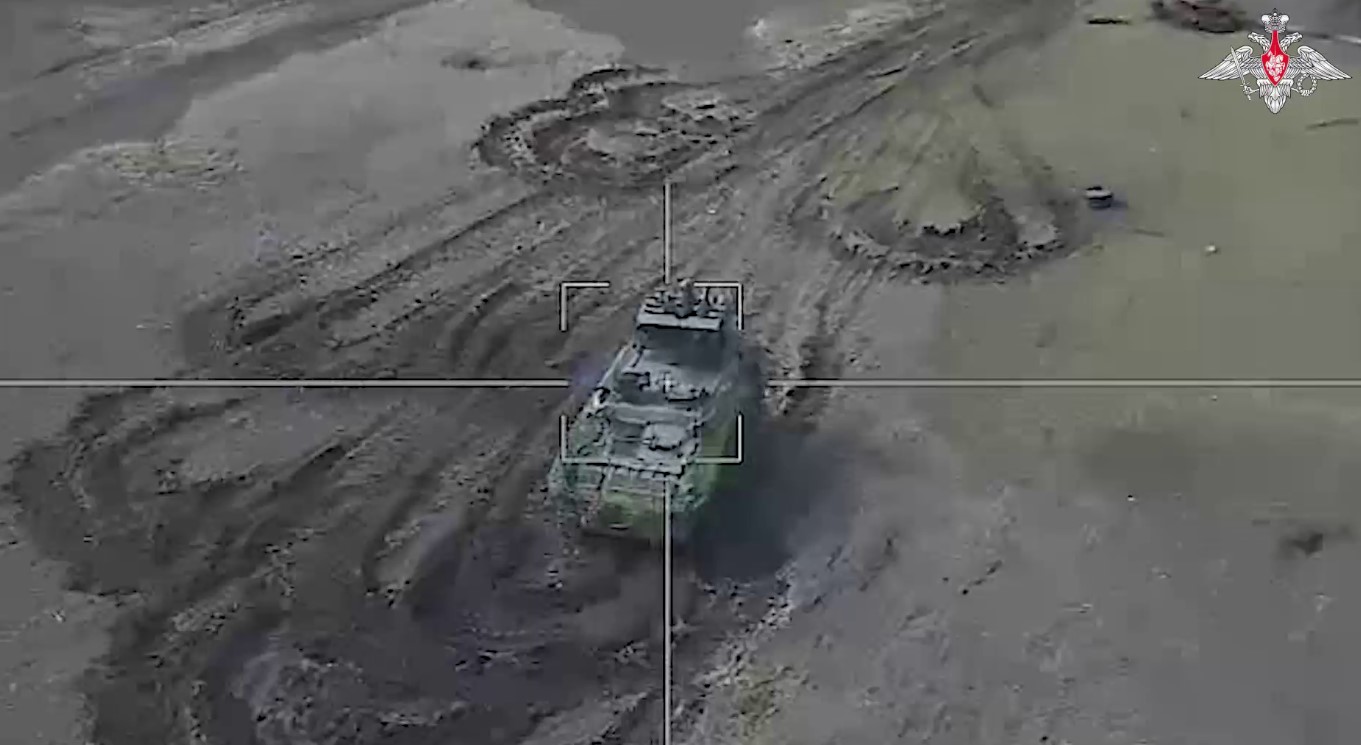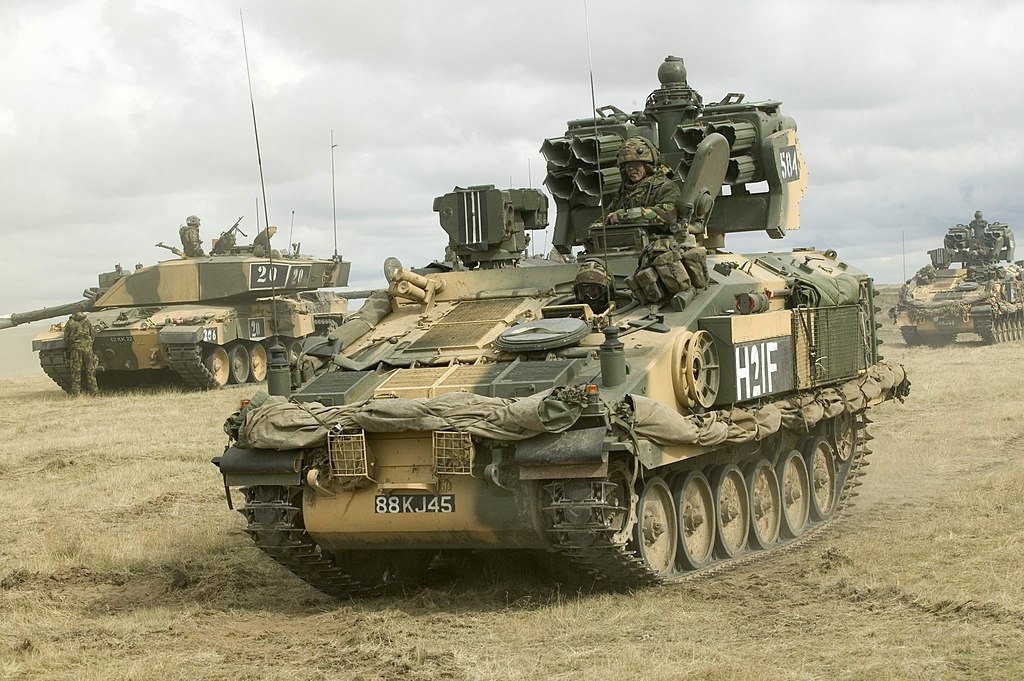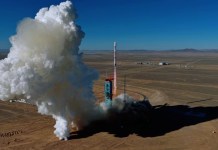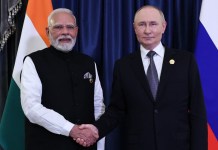The Russian Ministry of Defense (RuMoD) released a video through its VK social network account on March 11, 2023, showing the destruction of UK-supplied Stormer HVM (High-Velocity Missile) air defense system, using Lancet-3 loitering munition.
MUST READ: Credited For Getting Su-35 Fighters & S-400 Missiles From Russia, Sanctioned PLA General Is China’s New Defense Minister
As per reports, this is the first time Russia has announced the destruction of a Ukrainian Stormer HVM Starstreak air defense missile-tracked armored vehicle.
The Stormer HVM has been supplied to Kyiv by the United Kingdom. At least six units of the air defense system were reportedly delivered to Ukraine in 2022.
While the NATO countries have been reluctant to fulfill Ukraine’s requests for fighter jets for fear of escalation of the war, they continue to provide Ukrainian armed forces the capability to shoot down Russian fighter jets.
So, even if Ukraine lacks as much air power as the Russian military, its armed forces still have the ability to restrict airspace for Russian combat aircraft.
The Stormer HVM (High-Velocity Missile)
The Stormer HVM (High-Velocity Missile) is a short-range air defense system developed to counter threats posed to armored formations by assault helicopters and low-flying aircraft.
This air defense system is based on the chassis of a modified Alvis Stormer armored personnel carrier (APC). It is armed with Starstreak man-portable air defense missiles, with its launchers and target sensors located at the back.
#Ukraine: In #Donetsk Oblast, a UK-supplied Stormer HVM short range SAM system was damaged by a Russian Lancet loitering munition. pic.twitter.com/XqQSym54n6
— ?? Ukraine Weapons Tracker (@UAWeapons) March 11, 2023
The Starstreak missiles are powered by a two-stage solid propellant rocket motor, and they can fly at three times the speed of sound.
Each missile carries three high-density darts with impact fuses and explosive warheads to realize multiple impacts on the target. As the engine’s second stage burns out, the darts are released.
The missiles have a range of 1500 to 5500 meters and are capable of neutralizing low-flying aircraft, including ones with high performance. They have a service ceiling of 1000 meters.

The Starstreak HVM relies on a semi-automatic line-of-sight laser beam riding guidance system. The operator guides the missiles on the target by tracking the target using an optically stabilized sight.
Starstreak missiles can also hit ground targets, as the darts are believed to have sufficient kinetic energy to pierce the front armor of an Infantry Fighting Vehicle (IFV).

The launchers store eight ready-to-fire missiles, with a total of 12 missiles for reloading carried inside the hull. The Starstreak missiles are also launched from a three-round lightweight launcher and a man-portable shoulder launcher.
The Stormer vehicle has a roof-mounted panoramic weapon sight and an air defense alerting mechanism for target recognition and prioritization. The system can detect targets at a range of 18 kilometers and engage them rapidly. It is said to have a high probability of hitting the target.
Overall, the air defense system is operated by a crew of three, including a commander, operator, and driver.
Russia Uses Loitering Munitions To Destrtroy Kyiv’s Western-Supplied Equipment
As discussed in detail by EurAsian Times, the primary focus of Kyiv’s armed forces has been to deny air superiority to the Russian Aerospace Forces (VKS).
As part of this, the Ukrainian military fielded medium and long-range air defenses, like the S-300s and Buk-M1s, which forced the Russian fighters and choppers to fly at low altitudes, making them easy targets for anti-aircraft missile systems like Stormer HVM.
Ukraine’s air denial strategy worked for a while, but then the Russian military adapted to the circumstances and began employing loitering munitions like Iranian-made Shahed-136 and Russia’s own Lancet drones, in large numbers that somewhat overwhelmed Ukraine’s air defenses.
These loitering munitions gave Russia an expendable and cost-effective alternative to expensive aircraft and cruise and ballistic missiles. They enabled the Russian military to destroy the armored vehicles the US and European countries provided to Ukraine.
So, the Lancet-3 variant of the Lancet family of loitering munitions deployed by the Russian military to eliminate the Stormer HVM in question is essentially designed to destroy armored vehicles in particular.
Designed and developed by the Russian company Zala Group, a subdivision of the Kalashnikov Group, the Lancet-3 can be armed with either high explosive (HE) or HE-fragmentation warheads.
The Lancet-3 can travel at speeds from 80 to 110 kilometers per hour with a maximum endurance of 40 minutes and a maximum range of 40 kilometers.
- Contact the author at tanmaykadam700@gmail.com
- Follow EurAsian Times on Google News




